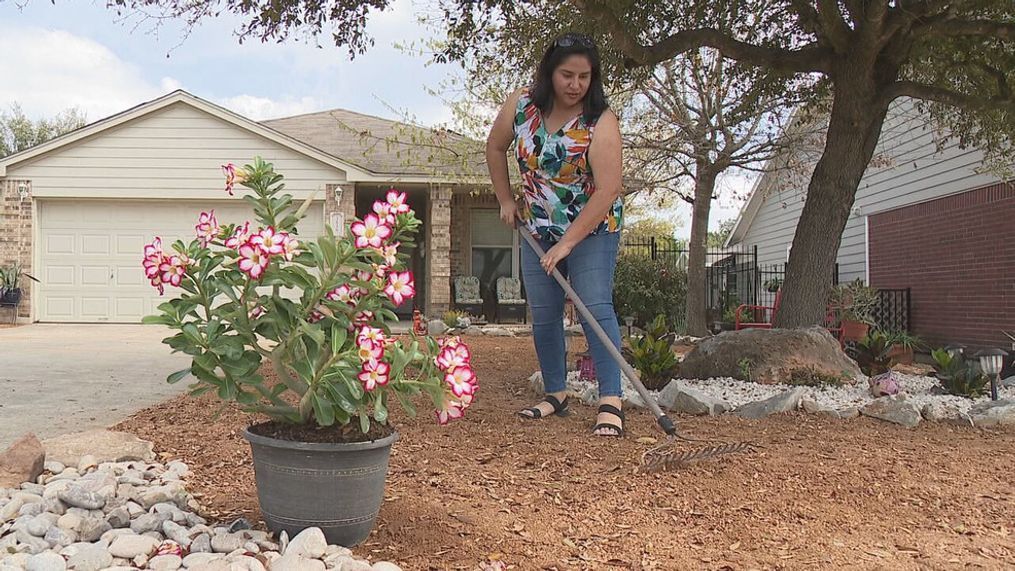Are you considering xeriscaping your yard?
SAN ANTONIO - Xeriscaping is a process of landscaping or gardening that reduces the need for irrigation. As we continue to deal with drought conditions across Texas, many homeowners are opting for this type of landscaping to reduce costs and make sure their yards stay looking good throughout anything Texas weather throws its way.
"So I had dirt and mud on that side, and burnt-up weeds on this side. So it was kind of a no-brainer for me if I wanted to have a nice yard, I needed to Xeriscape", says Jamie Elliott. Elliot is a homeowner in northern San Antonio. She, along with her neighbor Maria, decided that xeriscaping their yards was the best option for them.
"You just can't water enough, with as much sun as I get, to keep healthy grass", says Elliott.
"It was, like I said, half grass and a lot of weeds. So it wasn't a pretty yard", says Maria Resendez.
Jamie and Maria ripped out their grass, picked out decomposed granite and rocks from a supply company, and got to work. With their yards now xeriscaped, they are relieved at how little upkeep they have to do from now on.
"I don't have to mow the front at all, and the plants that I chose are all water-wise plants that do well in San Antonio. So once they're situated in the spots I planted them, I really don't have to do anything with them at all", says Elliott.
TELL US:What do you think about xeriscaping? Would you do it to your yard? CLICK HERE to join the conversation on Facebook...
"I personally feel like it's going to be less work for me too, and I can enjoy it. Being out here, and looking at all the beautiful landscape, and I think it extenuates my plants", says Resendez.
Wayne Harrell, General Manager at The Garden Center, agrees that xeriscaping is a good option for our climate.
"Xeriscaping is basically a philosophy of incorporating low water use plants, or drought tolerant plants into your landscape, and it also means other things, for example, minimizing turf areas. Turf areas are known to be one of the highest usage of water. A lot of people think of xeriscaping as gravel and cactus, well it's a whole lot more than gravel and cactus", says Harrell.
Harrell stresses finding beautiful plants that are drought tolerant is the key to a beautiful-looking, low-maintenance, yard. You don't have to break the bank.
"It doesn't necessarily need to be a big expense, you know, you can use old nursery containers. One thing that is very popular is these fabric bags, these are called smart pots, it's basically a material and it lasts, I've had some of these smart pops here at the nursery for 15 years, and it lasts forever. Because it is cloth, it does help provide a little bit of oxygen to the root system of the plants, and plants just thrive in these silly little things", says Harrell.
FIVE things you need to know before considering to xeriscape your own yard...
1. Start with the right soil. Xeriscaping requires soil that can capture and hold onto moisture to prevent drying out and the need for constant watering.
2. Choose plants that do not require much watering, and can hold onto water for long periods of time.
3. Water efficiently. An integrated drip watering system or hand-watering with a can will often use much less water and will cut down tremendously on waste.
4. Mulch properly. Mulch not only looks attractive but serves a very important purpose in preventing the evaporation of water and keeping water near the plant’s roots.
5. Provide proper maintenance to keep plants healthy. Because your plants will receive less water, they must rely on rainfall and the soil to provide what they need. You can help them succeed by providing the right nutrients, trimming, and pruning, and thinning when necessary.





